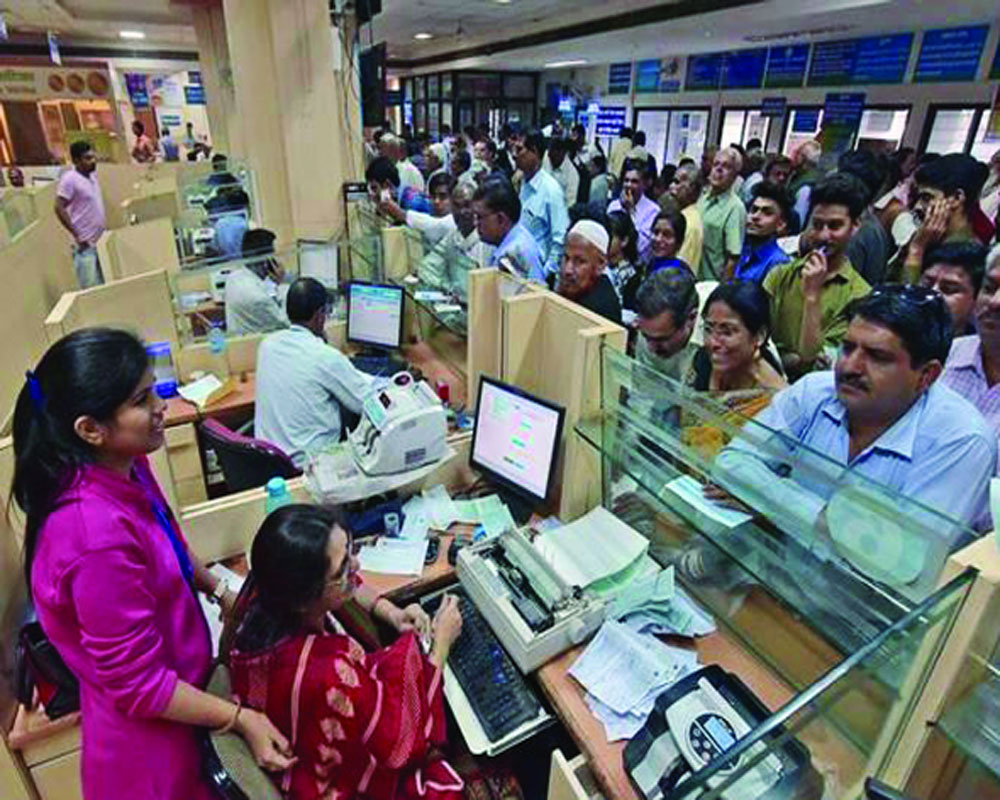The Indian banks, especially the public sector banks, are yet to benchmark the criterion for NPA and keep risk in tolerable limits while disbursing loans
Upcoming elections in 3 states followed by parliament elections next year will heat up the debate on freebies, loan-waiver etc. Very often the opposition targets the ruling party for favouring the corporates while ignoring the plight of farmers and small businessmen. There could be debate on the economic models adhered to by different ruling coalitions and their pros-cons but there is no second thought that India needs more industrialization to create more jobs for its aspiring youth. Apart from jobs, taxes, export earnings, wealth creation etc., the corporate sector has played its role in nation-building right from the pre-independence era. Business houses like Tata, Birla, Hirachand Walchand, Thapar, Dalmia etc. created the foundation of an industrialised India and provided financial support to the freedom struggle. Very recently, our fight against the COVID-19 pandemic would not have been possible without the active support of our scientists and industrial community.
Every business has its inherent risks that cannot be eliminated. Financial institutions also take the risk while lending to businesses for which they are compensated by way of interest which takes into consideration the borrower's creditworthiness, amongst various other factors. If the business is failing despite the best efforts and honest intentions of the management then a loss to the bank should be viewed as a mere commercial decision but it becomes a political topic in our country because large-scale lending is done by the Public Sector Banks (PSBs).
Banks are the backbone of any economy and therefore it is necessary to understand the trend to draw a meaningful conclusion. Profit of PSBs crossed the magic number of Rs. 1 lakh crore in FY23 and the asset quality has also been improved. In 2005, the Gross Non-Performing Asset (GNPA) of the PSBs was Rs. 46,599 crores while the gross advances were Rs. 870,851 crores. Annual loan growth during the UPA era was in double digits and gross advances of PSBs reached to Rs. 5,215,920 crores in 2014, recording a CAGR of 22%! Quality of loan is very important and if proper due diligence is not done then there is always a risk that such advances will eventually turn bad in the near future. This phenomenal credit growth during the UPA era is often cited as ‘phone banking’ by PM Modi and even former RBI governor Raghuram Rajan accepted that many bad loans were given during UPA tenure.
The NPA crisis of the Indian banks was called the ‘twin balance-sheet issue’ which means a scenario where the bank balance sheet is under stress while the corporate balance sheet is over-leveraged. This problem emanated from reckless lending where loans were made to well-connected promoters who had a history of loan default. The NDA government initiated the NPA clean-up and simultaneously started infusing money for bank recapitalisation. The Modi government has infused more than Rs. 3.1 lakh cores via recapitalization bonds to avoid stress on fiscal deficit position. This recapitalisation was needed to improve the economic capital of the banks and enhance their lending capability.
Loan write-off is often quoted in the discussion on banks performance and amounts written-off by banks are projected as a benefit given to the corporate sector by the PSBs. First, there is a difference between loan waiver and write-off and second, write-off is a commercial decision that happens in private sector banks also. If a loan write-off indicates corruption or inefficiency then it should be kept in mind that since 2015, ~28% of loan write-offs are by private sector banks out of overall write-off by SCBs and this ratio is almost the same during UPA tenure. PSBs wrote off ~Rs. 10 lakh crores since 2015 and out of this amount, Rs. 5.65 lakh crores were on technical grounds. Technical write-off is a normal banking practice undertaken by lenders to cleanse the balance sheets. Such technical write-offs do not entail any waiver of claims against the borrower and thus the lenders’ right to recovery is not undermined in any manner. A willful defaulter or a fraudster cannot access the institutional finance for 5 years even if a compromise has been reached with the lender, notwithstanding that any compromise with the lender shall not abate the criminal complaint against the borrower. Write-off decisions are taken on account of multiple considerations in which income tax deduction is a prime concern. Banks continue to chase for recovery in case of write-offs which is different from loan waivers and a smear campaign against the banks/government on a merely accounting construct is uncalled for.
It should be noted that the reduction in NPA due to actual recovery has increased from Rs. 145,618 crores (over 10 years from 2005 to 2014) to Rs. 542,664 crores (over 9 years from 2015 to 2023). Resolution of cases under the Insolvency Law enacted in 2016 has also helped in recovery from the borrowers, though the haircut under the recovery process is still a matter of debate.
In a response to the RTI application, RBI said that it does not maintain the details of the amount recovered from fugitive economic offenders and it does not collect the information related to year-wise sanction of loans which turns out as NPA. The issue of bad loans takes a political colour in our country and therefore it would have been better had this information been also collected by the central bank. Our banks are yet to adopt the global benchmark concerning the measurement of NPAs which are referred to as the ‘Expected Credit Loss (ECL)’ model in the financial reporting standards and the numbers reported under the existing framework give an impression that consistent policy initiatives have yielded positive results.
(The writer is a Chartered Accountant, Author, and Public Policy Analyst; views expressed are personal)


























